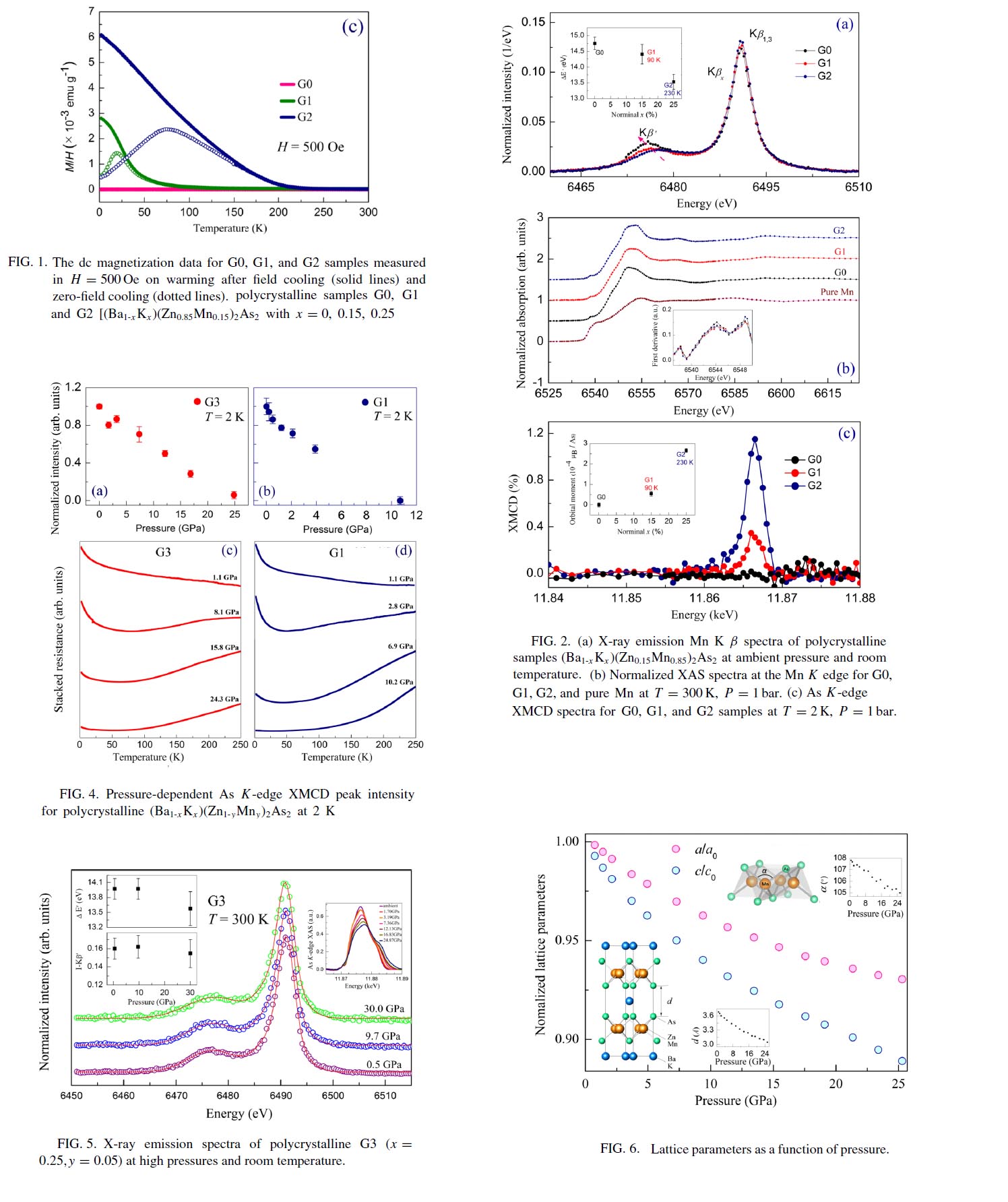空穴掺杂以及压力对稀磁半导体(Ba1-xKx)(Zn(1-y)Mny)2As2性质的调控
(Hole doping and pressure effects on the II-II-V-based diluted magnetic semiconductor (Ba1-xKx)(Zn(1-y)Mny)(2)As-2 )
F. Sun, G. Q. Zhao, C. A. Escanhoela, B. J. Chen, R. H. Kou, Y. G. Wang, Y. M. Xiao, P. Chow, H. K. Mao, D. Haskel, W. G. Yang and C. Q. Jin
Phys. Rev. B 95, 094412 (2017)
We investigate doping- and pressure-induced changes in the electronic state of Mn 3d and As 4p orbitals in II-II-V-based diluted magnetic semiconductor (Ba1-xKx)(Zn1-yMny )2As2 to shed light into the mechanism of indirect exchange interactions leading to high ferromagnetic ordering temperature (T c = 230K in optimally doped samples). A suite of x-ray spectroscopy experiments (emission, absorption, and dichroism) show that the emergence and further enhancement of ferromagnetic interactions with increased hole doping into the As 4p band is accompanied by a decrease in local 3d spin density at Mn sites. This is a result of increasing Mn 3d–As 4p hybridization with hole doping, which enhances indirect exchange interactions between Mn dopants and gives rise to induced magnetic polarization in As 4p states. On the contrary, application of pressure suppresses exchange interactions.While Mn K β emission spectra show a weak response of 3d states to pressure, clear As 4p band broadening (hole delocalization) is observed under pressure, ultimately leading to loss of ferromagnetism concomitant with a semiconductor to metal transition. The pressure response of As 4p and Mn 3d states is intimately connected with the evolution of the As-As interlayer distance and the geometry of theMnAs4 tetrahedral units, which we probed with x-ray diffraction. Our results indicate that hole doping increases the degree of covalency between the anion (As) p states and cation (Mn) d states in theMnAs4 tetrahedron, a crucial ingredient to promote indirect exchange interactions between Mn dopants and high T c ferromagnetism. The instability of ferromagnetism and semiconducting states against pressure is mainly dictated by delocalization of anion p states.

